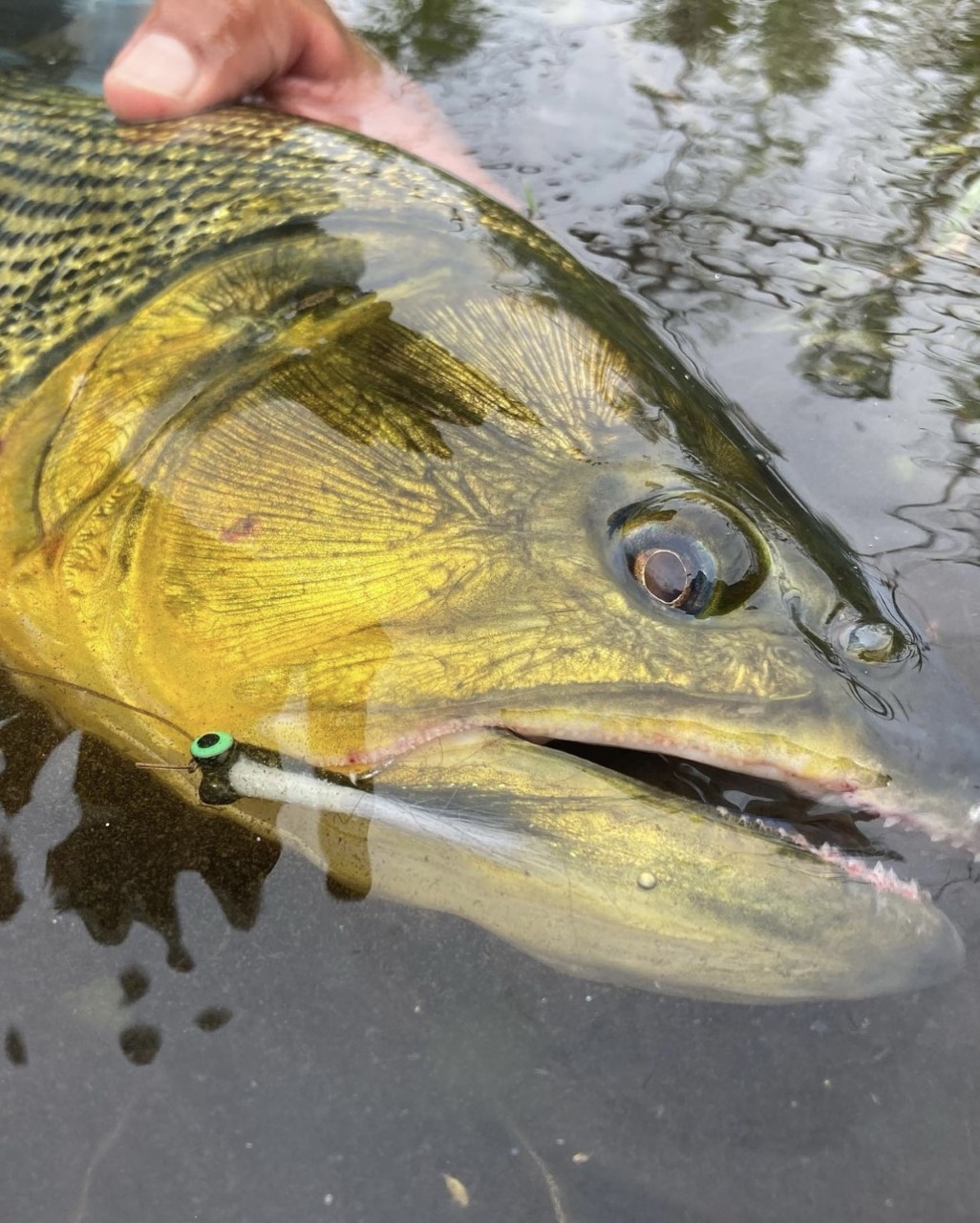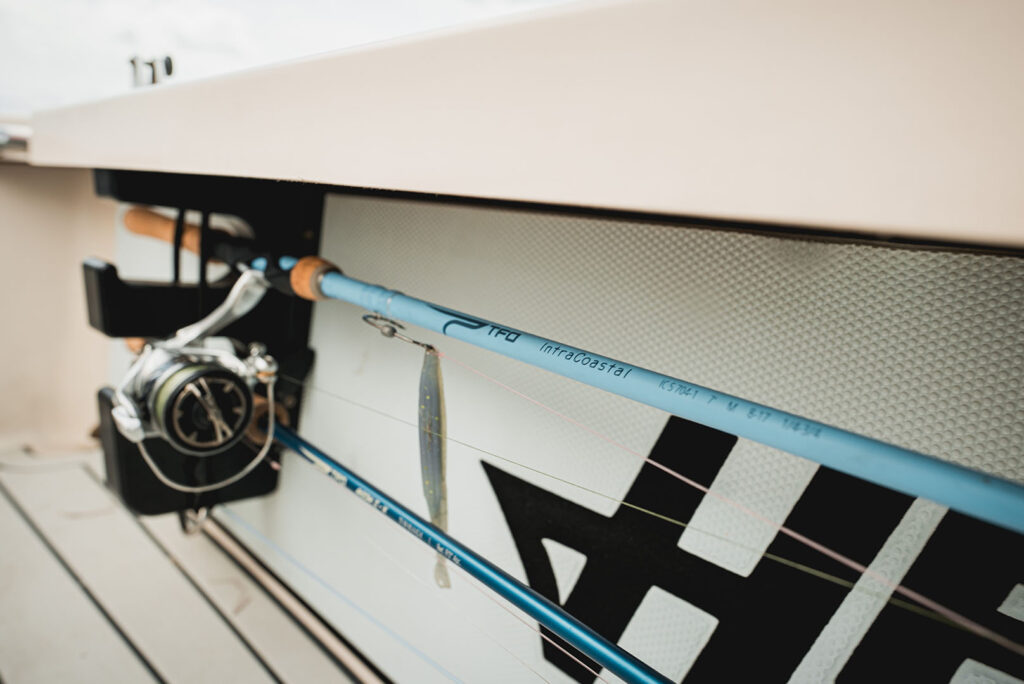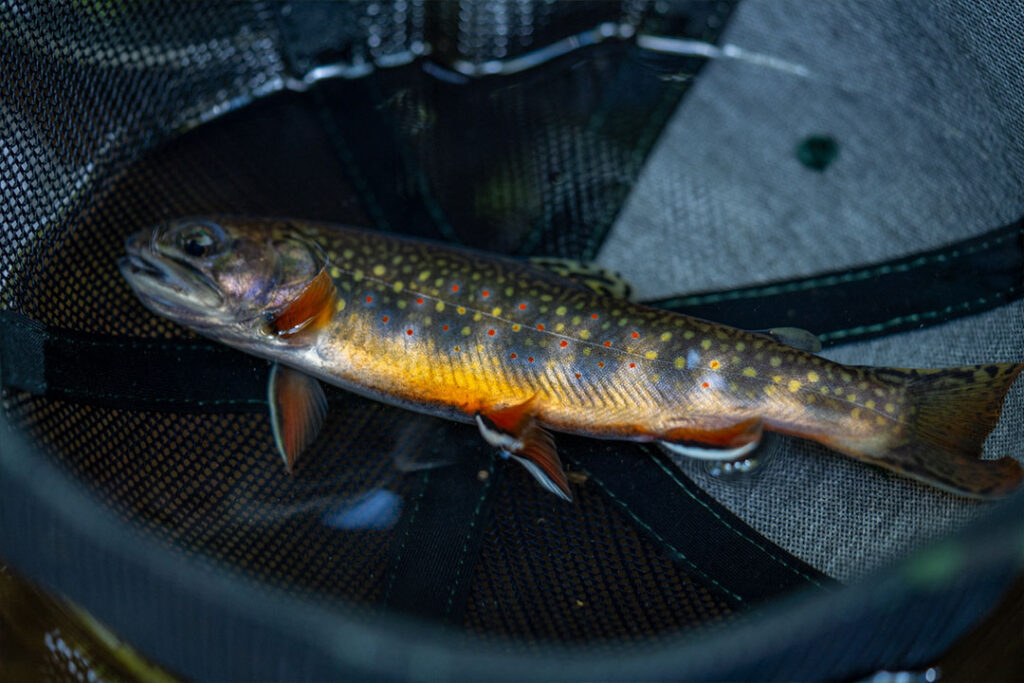Every angler, fly or conventional, has a “go-to” lure or fly they use, whether it’s for one species or multiple. Many trout anglers might say the pheasant tail nymph is their preferred fly. Others would never consider a fly box complete without at least one of Lefty Kreh’s Deceivers or Bob Clouser’s Deep Minnows. These patterns are nearly universal, timeless, and effective because they successfully “match the hatch,” mimicking numerous insects and a variety of bait.

Blog author Lino Jubilado with a common carp caught with a TFO Mangrove Coast fly rod and NTR reel set up. // Photo: Lino Jubilado
Many fly tiers reproduce these tried-and-true generalized patterns, but it’s just as common that they try to replicate the prey species specific to their waters or target species. There are others, still, that tie flies as an art form or to duplicate an action or movement. I created my signature fly, the “Skunk Buster,” not to match any particular hatch or bait, but rather to mimic a “go-to” lure from my days of fishing conventional tackle – a tube jig.
In the 1980s, tube jigs became very popular and every conventional angler was using them. The jigs were made in every color and size ranging from ½-inch Crappie John Jigs on up to 8-inch Gitzits and Tora Tubes. Tube jigs were my go-to for everything from crappie to trout in freshwater, and barracuda to jacks in the saltwater. These jigs all have a “fishy” profile and a very natural swimming action. Fish love them as much today as they did then.

The Skunk Buster fly // Photo: Lino Jubilado
The Skunk Buster is a hollow-style fly made of craft fur tied on a jig hook with a tungsten bead that is then coated with silicone or epoxy to maintain shape and durability. I’ve tried other types of synthetic hair, but I’ve found that the hypnotic and pulsating action of craft fur is unmatched. The anatomy is much like a balanced leech so that, like that fly, the hook rides point up. This allows the fly to swim horizontally as it is stripped though the water and makes it more resistant to snags and fouling. It not only replicates the action of the tried-and-true tube jig, but it also imitates baitfish and leeches to perfection. Eyes can be added for even more realism, but I tied most of mine without eyes and the fish don’t seem to mind at all. The combination of the tungsten bead and the jig hook creates an irresistible jigging action that triggers strikes even when fish are not hungry. This pattern has come through for me on numerous occasions when fishing was tough and getting “skunked” seemed otherwise inevitable. Hence its name- the Skunk Buster.
The Skunk Buster can be stripped aggressively or slowly with either a single- or two-handed retrieve. When stripping in the line aggressively, the strike is usually fast and furious, and a fish will usually hook itself. When applying a slow single- or two-handed retrieve, the strike is usually more subtle, often producing grabs that feel like little more than a “tick” on the line, or maybe just enough to make the line jump a bit. This “jump” is the moment the fish inhales the fly. Many fish like the largemouth bass, will strike and stay right where they are or swim away slowly after the take. In either case, you will start to see your line coming tight as you retrieve the fly. When this happens, swing hard or strip set until you feel the hook bury itself.
During the winter and early spring I like fishing a Skunk Buster under an indicator. Especially when targeting freshwater species like bass, crappie, and trout. I usually start off with my tippet and leader system equal to the length of the rod and will make adjustments depending on the depth and or where fish are holding. I like to slowly strip and twitch the indicator in with 5- to 10-second pauses in between. It is a lot of fun watching your indicator drop when an aggressive fish strikes. Unfortunately, many bites are super subtle in the winter time because the fish are lethargic and unwilling to exert energy trying to chase down bait. This is why it is extremely important to keep your focus on that indicator. If it bobs, twitches, or disappears, set the hook as fast as you can—and set it hard!
The Skunk Buster is a versatile pattern. By applying a UV-cured resin for added durability, instead of silicone, you can strip it in the salt along sandy bottoms or tick and bounce it off rock bottoms. It can also be modified by adding dumbbell eyes and applying a heavier epoxy-type resin to the body—a version I call the Beach Buster. This ensures it’s durable enough to be dragged through sand or rocks, and it will easily withstand the bite of toothy species like golden dorado and leopard sharks. You can also easily add weed guards for targeting fish holding tight to thick cover.

Leopard shark on the fly! Lino Jubilado putting in some work on the LK Legacy while doing some surf fly fishing.
The Skunk Buster can also be easily modified to be used as a top water pattern. Instead of tying it with a jig hook and tungsten bead, simply slick back craft fur over a stout, long shank popper or saltwater grade hook. Heavily epoxy or silicone on a foam popper head and you’ll create an irresistible popper—The Belly Buster.

The Belly Buster Fly // Photo: Lino Jubilado
The Skunk Buster, and its variations, are definitely my “go-to” patterns for a variety of species and they fill up most of the slots in both my fresh and saltwater fly boxes
But fishing a “go-to” fly is only as good as the equipment with which you fish it. It is critical to fish highly sensitive, well balanced, rod-and-reel combos in order to detect those subtle takes. It is also important to have forgiving rods that can load the line and cast heavier patterns with ease.
When fishing the Skunk Buster, I like to use rods like the LK Legacy and Blue Ribbon in 5- to 7- weights with a weight-forward floating line. In windy conditions, I’ll either add an intermediate sink tip, or switch to a full-intermediate line. When chasing saltwater species and/or using a full-sink line to get that Buster down deep, I prefer the LK Legacy, or the Mangrove Coast in 7- to 10-weight rods.
Reels with smooth, sealed drags, good line capacity, and quick line pick up is also important. I really like the BVK SD reel and the new NTRs. They balance perfectly with the LK Legacy, the Blue Ribbon, and the Mangrove rods, and they won’t break the bank.


Since the Skunk Buster is a streamer pattern, let’s not forget a stripping basket. Stripping baskets are a must, especially when you’re on foot casting from rocks or off the surf. They are a great line management tool and will help keep your fly line from tangling around your legs and ankles as you strip the fly in—especially in the surf. It will also help keep your line organized and ready if a fish decides to aggressively swim off after the hook set. I think the best basket on the market is the Linekurv stripping basket offered by Temple Fork Outfitters.

The Buster series of flies are a must-have pattern for all fly anglers. No matter what species you are targeting, in either fresh or salt, make sure to add a few Skunk Busters to your arsenal. You’ll quickly discover why it’s my go-to fly for almost all species and situations.
Blog and photos provided by TFO Ambassador Lino Jubilado. You can follow him along on Instagram here.
![]()






